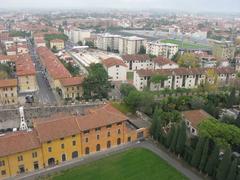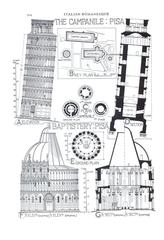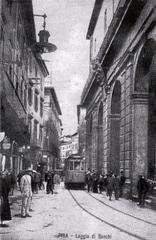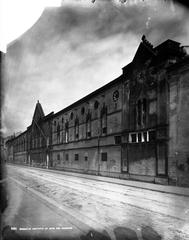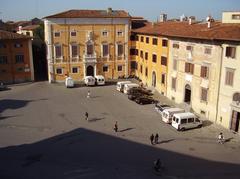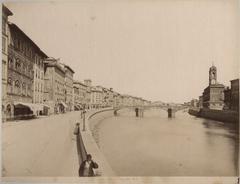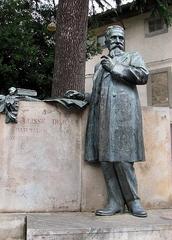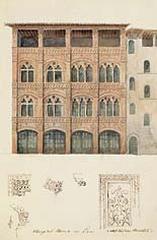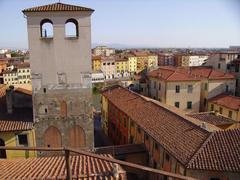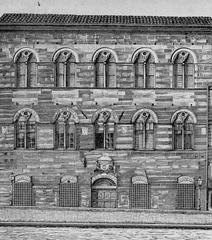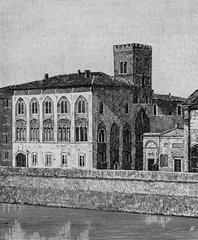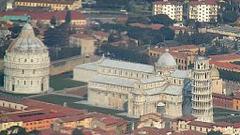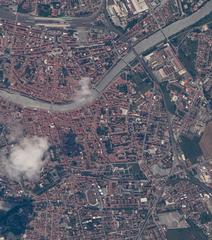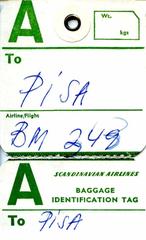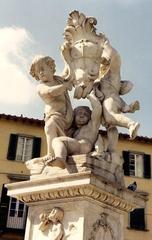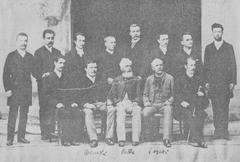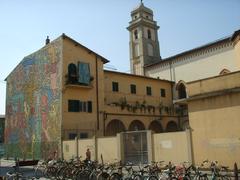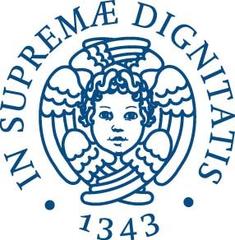Palazzo Bocca Pisa: Visiting Hours, Tickets, and Guide to Historical Sites
Date: 14/06/2025
Introduction
Palazzo Bocca stands as one of Pisa’s most significant historic landmarks—deeply intertwined with the city’s intellectual, scientific, and architectural legacy. Located at the corner of Borgo Stretto and Via Mercanti in the heart of Pisa’s historic center, this palazzo is best known as the former residence of the Galilei family, including the renowned scientist Galileo Galilei. While its interior remains private and inaccessible, the building’s elegant exterior and prominent location make it a compelling stop for visitors interested in Pisa’s Renaissance and scientific heritage. This guide provides a comprehensive overview of Palazzo Bocca’s history, architectural highlights, practical visitor information, accessibility, nearby attractions, and tips for making the most of your Pisa experience (GPSmyCity, Visit Tuscany, OneDayItinerary).
Contents
- Historical Overview of Palazzo Bocca
- Architectural Highlights and Urban Context
- Visitor Information: Hours, Tickets, Accessibility
- Nearby Attractions and Suggested Itineraries
- Practical Tips for Visitors
- Frequently Asked Questions (FAQ)
- Visuals and Media Suggestions
- Further Reading and Related Links
- Conclusion and Call to Action
Historical Overview of Palazzo Bocca
Origins and the Galilei Connection
Palazzo Bocca traces its origins to the late medieval and Renaissance periods, reflecting Pisa’s transformation from a maritime republic to a hub of learning and culture. The palazzo is most famous for its association with Galileo Galilei, who spent part of his youth here as the son of Vincenzo Galilei, a noted musician and theorist (Visit Tuscany). This connection situates the building at the heart of Pisa’s Renaissance-era intellectual ferment and scientific advancement.
Role in Pisa’s Urban Fabric
Situated on Borgo Stretto, one of Pisa’s most vibrant and storied streets, Palazzo Bocca stands within a network of historic structures that have defined the city’s identity for centuries. Its presence reflects the evolution of Pisan noble architecture and the city’s enduring tradition of scholarship, especially in proximity to the University of Pisa (GPSmyCity).
Architectural Highlights and Urban Context
Palazzo Bocca exemplifies the restrained yet harmonious elegance of Pisan Renaissance design:
- Façade: Characterized by balanced proportions, arched windows, and subtle stone detailing.
- Location: Prominently situated at the bustling intersection of Borgo Stretto and Via Mercanti, marked by a commemorative plaque honoring the Galilei family (Visit Tuscany).
- Integration: The building blends with Pisa’s medieval arcades, lively cafés, and boutiques, offering a sense of living history amidst everyday urban life.
Though the palazzo’s interior is not open to the public, historical records suggest original features such as vaulted ceilings and period fireplaces remain intact, reflecting the domestic life of Pisa’s upper classes during the Renaissance (GoAskALocal).
Visitor Information: Hours, Tickets, Accessibility
Visiting Hours and Admission
- Exterior Viewing: The façade and commemorative plaque can be admired at any time along Borgo Stretto.
- Interior Access: The palazzo is a private residence; interior visits are not permitted.
- Tickets: No tickets or admission fees are required for exterior viewing (OneDayItinerary).
Accessibility
- The area is pedestrian-friendly, flat, and paved, making it accessible for visitors with mobility challenges.
- Public transportation and bicycle rentals are available nearby for easy access.
Guided Tours
- Many Galileo-themed and Pisa historical walking tours include a stop at Palazzo Bocca. Tours must be booked in advance via local operators or tourism offices (GPSmyCity).
Nearby Attractions and Suggested Itineraries
Palazzo Bocca’s prime location provides easy access to Pisa’s top sites:
- Borgo Stretto: Medieval arcades, boutiques, and vibrant cafés (Visit Tuscany).
- Chiesa di San Michele in Borgo: Pisan Gothic church with notable artworks (Love From Tuscany).
- Piazza delle Vettovaglie: Daily market and nightlife hotspot.
- University of Pisa (La Sapienza): Historic university with Galileo associations.
- Piazza dei Miracoli: Leaning Tower, Cathedral, Baptistery, and Camposanto (Touropia, Ditis Italie).
- Palazzo Blu: Art museum with free permanent collections (The Geographical Cure).
- Museo Nazionale di San Matteo: Medieval art masterpieces.
- Museo Nazionale di Palazzo Reale: Former royal residence and Galileo observation site (Visit Tuscany).
- Street Art: Kobra’s Galileo mural at Centro Macarone (Visit Tuscany).
- Lungarni: Scenic Arno river embankments (Love From Tuscany).
- Santa Maria della Spina: Riverside Gothic church (Ditis Italie).
- Piazza dei Cavalieri: Renaissance square at the civic and academic heart of Pisa.
Practical Tips for Visitors
- Best Time to Visit: Spring (April–June) and fall (September–October) offer pleasant weather and fewer crowds.
- Photography: Early mornings and late afternoons provide optimal lighting for the façade.
- Amenities: Restrooms and dining options are plentiful along Borgo Stretto, with traditional Tuscan cuisine and artisanal gelato widely available (The Geographical Cure).
- Safety: The area is lively and safe; keep personal belongings secure in busy periods.
- Respect: As Palazzo Bocca is a private residence, avoid blocking entrances or causing disturbances.
Frequently Asked Questions (FAQ)
Q: Can I visit the interior of Palazzo Bocca?
A: No, the interior is private and not open to the public.
Q: Are there tickets or official visiting hours?
A: No tickets or scheduled hours; the exterior is viewable at any time.
Q: Are guided tours available that include Palazzo Bocca?
A: Yes, many walking tours include the site, especially those focused on Galileo’s legacy.
Q: Is the area accessible for people with mobility issues?
A: Yes, the surrounding streets are flat and pedestrian-friendly.
Q: What are the best nearby attractions?
A: Piazza dei Miracoli, Piazza dei Cavalieri, Borgo Stretto, museums, markets, and the Arno embankments.
Visuals and Media Suggestions
- Images: Include high-quality photos of the Palazzo Bocca façade, commemorative plaque, and Borgo Stretto’s arcades.
- Map: Embed an interactive map marking Palazzo Bocca and surrounding attractions.
- Alt Text: Use descriptive alt text such as “Palazzo Bocca façade in Pisa’s historic center.”
Further Reading and Related Links
- Palazzo Bocca Visiting Hours, Tickets, and Historical Guide to Pisa’s Intellectual Landmark, 2025, GPSmyCity
- Palazzo Bocca in Pisa: Visiting Hours, Tickets, and Architectural Highlights, GPSmyCity
- Palazzo Bocca Visiting Hours and Nearby Attractions in Pisa: Your Complete Guide, Visit Tuscany
- Palazzo Bocca Visiting Hours, Tickets, and Its Place Among Pisa Historical Sites, Visit Tuscany
- OneDayItinerary
- Love From Tuscany
- The Geographical Cure
- Touropia
- Ditis Italie
Conclusion and Call to Action
Palazzo Bocca offers a subtle yet profound window into Pisa’s illustrious past, bridging the city’s architectural evolution with its pivotal role in the Scientific Revolution. While interior access is restricted, its storied façade and commemorative plaques provide meaningful context for Galileo’s formative years and the Renaissance culture that flourished in Pisa. Its central location makes it an ideal starting point for exploring the city’s wealth of attractions, from the Leaning Tower to Borgo Stretto’s lively arcades.
For an enriched experience, download the Audiala app for guided audio tours, real-time visitor updates, and exclusive content on Pisa’s landmarks, including Palazzo Bocca.
Follow us on social media for the latest travel insights, cultural stories, and special offers to make your Pisa visit truly memorable.
